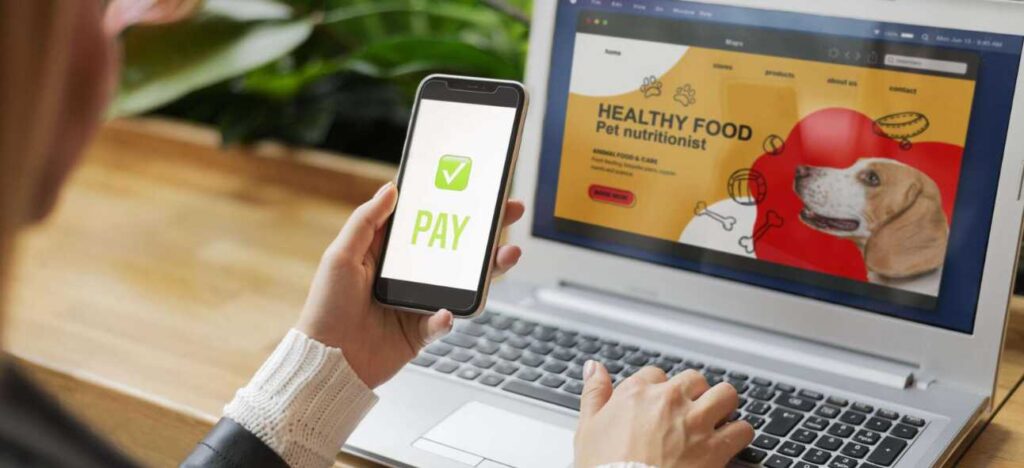Mobile Payments in Europe
Mobile payments are exploding in Europe. Now they account for 50% of all overall online sales in Europe. And over the next five years, the mobile payments market is projected to grow at a CAGR of 26.3%. This isn’t surprising, if you look at the way mobile commerce has grown in the last few years. Reports say mobile commerce in Europe will reach USD 134.37 billion by 2024. Anchored by growing internet penetration across Europe, an increasingly digital-savvy audience, and a preference for contactless payments.
Digital wallets seem to be a favoured payment option on mobile, with nearly 44% Europeans preferring to pay through e-wallet apps. Digital wallets are favoured by merchants too, as they are more secure and are easy and cheaper to install. Plus, they follow the revised Payment Services Directive (PSD2) norms to ensure safe payments.
M-commerce Drives the Change
The number of people shopping online is growing across Europe – 75% of Europeans report having shopped online last year. The proliferation of mobile devices such as smartphones, tablets, and smartwatches have led to people switching to mobile channels to browse, shop, and pay online.
In Germany, for example, 20% of all in-store transactions in the country are made using mobile devices. PayPal is the leading digital wallet, accounting for 83% of all domestic online transactions (digital wallets account for overall 44% of all online payments). While in the UK, the value of contactless payments spiked to 50% in 2022.
What Merchants can Learn from This
To make the most of this surge in mobile commerce and mobile payments, you must align your business to support mobile payment options, along with designing a mobile-friendly checkout. Here’s a quick look at what you could do:
1. Optimize checkout for mobile
You must optimize your checkout to drive more sales through mobile channels. Design a smooth checkout process so that shoppers can pay easily and securely. Give them more control and flexibility. This is key to conversion and long-term loyalty. Ensure you accept local payment methods, local currencies, alternative payments as a part of your strategy.
One-click checkouts and faster loading times help to maximize conversions. Ensure your checkout page is error-free. Use tools like 3D Secure to perform multi-factor authentication to secure payments. This will also help you remain compliant with PSD2 laws in Europe.
To enable customers to pay through mobile at your store, accept digital wallets, QR code payments, and Tap on Phone. These payment methods use modern technology like Near Field Communication or NFC to help shoppers to pay contactless simply by scanning a QR code or waving their card/ phone before a card reader. No typing details, no touching buttons, just simple scan and go. They are also cost-efficient, easy to set up, and customer-friendly: all solid reasons why they are so popular and why you must offer them.
Read more: How to Choose a Mobile Payment Gateway
2. Invest in mobile apps + use in-app payments
Mobile apps can help you to engage your users and encourage them to buy your product or service. They also enable you to communicate with your users and keep your brand awareness high on their minds. Research shows that mobile apps can increase conversion rates 3x when compared to mobile websites.
Buyers also like to shop on app. Data from App Annie show that smartphone users spend 7x more time in native apps than in browsers. You must leverage in-app payments to drive purchases from users. Build a mobile app (if your business doesn’t already have one) – this will help you engage better with your customers and offer easy payments for them.
Read more: How to Use In-App Payments to Boost Customer Engagement
3. Offer digital wallets
Digital wallets are the most used payment method in Europe’s five largest e-commerce markets. In the UK, which is the number one e-commerce market in Europe, over one in three consumers use a digital wallet. PayPal, a popular digital wallet, is preferred by 93% of Germans and 91% of Italians.
Digital wallets are seemingly more popular with the 18-34 year olds, with 64% in the age group using a digital wallet. PayPal, Apple Pay, Google Pay, and Samsung Pay are popular ones. Digital wallets enable fast, easy, and secure purchases using their smartphones. They use 2-factor authentication and end-to-end encryption to protect merchants and shoppers from fraud. They are easy and quick to set up, and allow zero-touch, fuss-free payments that can be used anytime, anywhere – in-store, in-app, or online. There are local digital wallets in Europe that are quite popular as well, such as iDEAL in the Netherlands.
So, if you are a seller in the Netherlands or sell to customers there, be sure to offer iDEAL as a choice in the list of payment options. All major banks and card schemes support major e-wallets.
Read more: Why Digital Wallets Are a Great Choice for Small Businesses
Mobile payments – how Novalnet helps
We can help you accept mobile payments easily. Our instant plug-ins and APIs help you set up mobile payments quickly, with minimal coding and hassle. We help Europe’s leading brands to process payments smoothly. Our technology allows you to accept payments globally in 125+ currencies in 150+ automated country-specific payment methods. Plus, AI-based risk management solutions and advanced analytics solutions help you design the best payment experiences for your customers, all in a fully secure PCI DSS-certified environment.
Reach out to us today to know more about how we can help.
Jose Augustine is the Chief Business Development Officer at Novalnet with extensive experience in European payment industry and a knowledge powerhouse.
